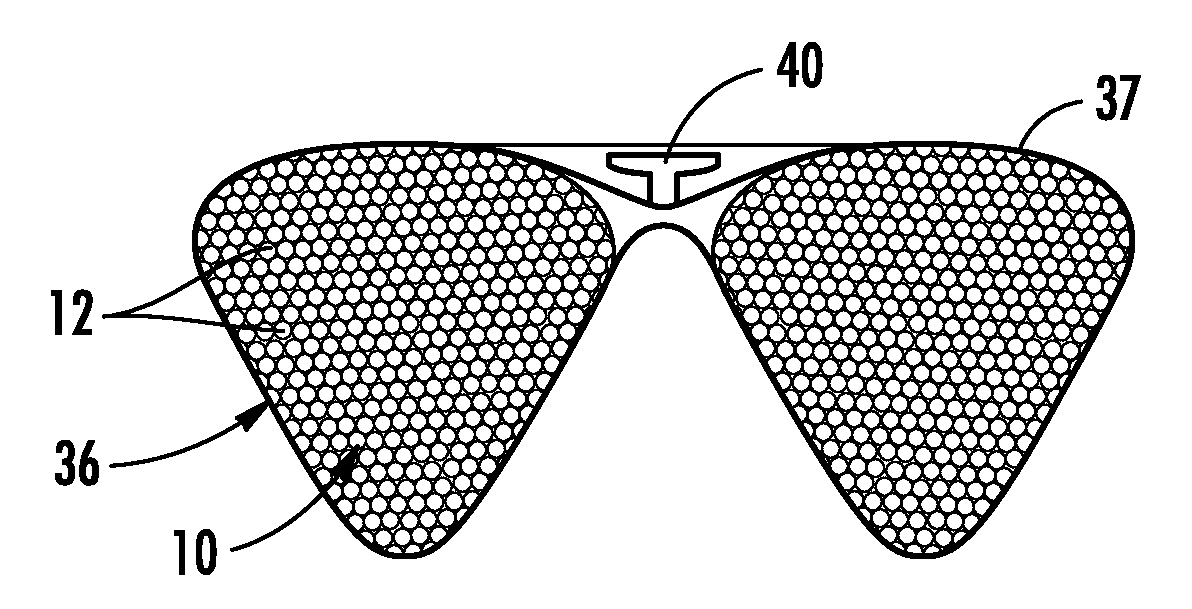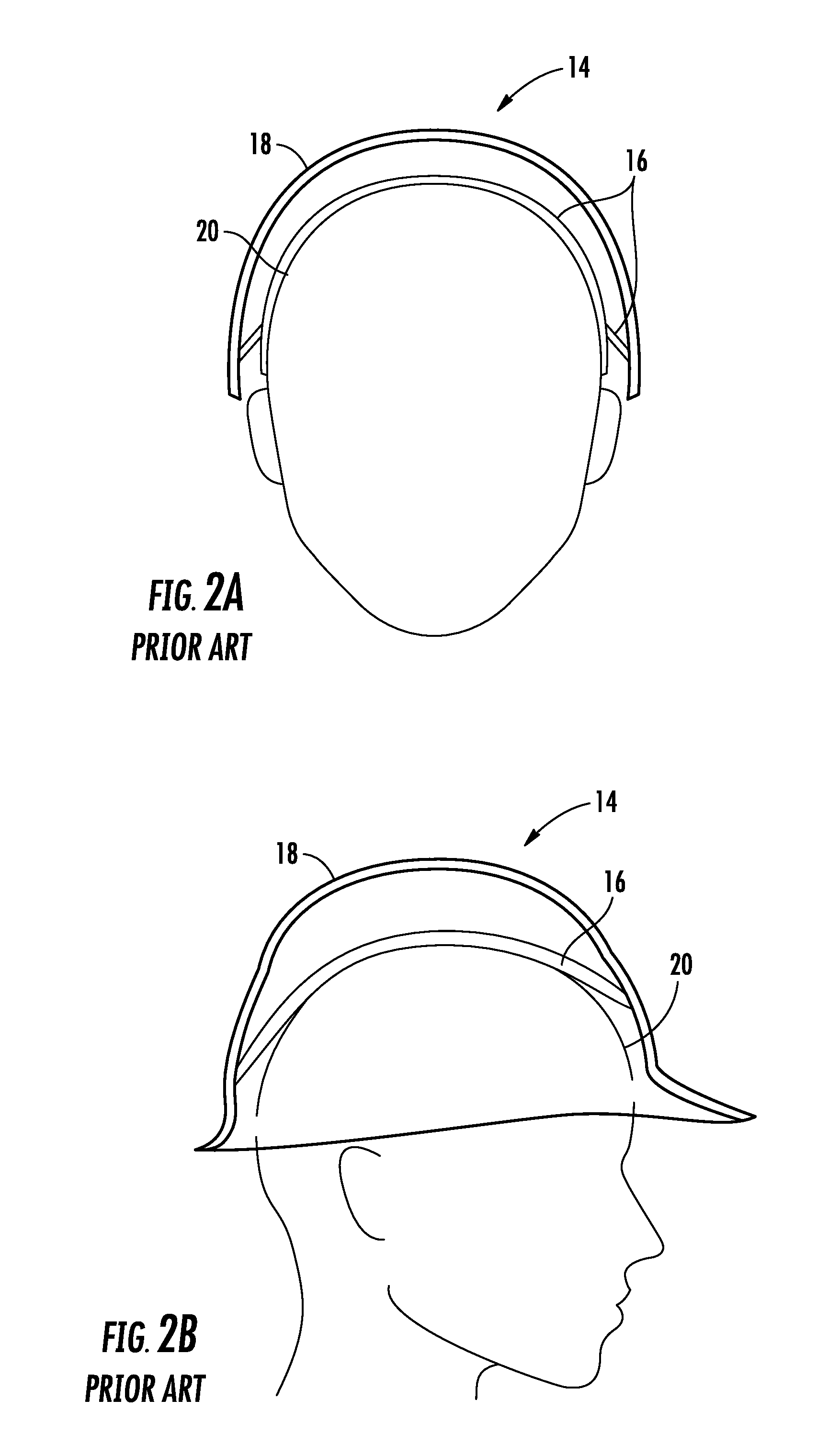Impact energy attenuation system
a technology of impact energy and attenuation system, which is applied in the field can solve the problems of prior art helmet protection system, insufficient protection, and significant problems of prior art system, and achieve the effects of increasing the range of impact energy attenuation, high responsiveness, and rapid res
- Summary
- Abstract
- Description
- Claims
- Application Information
AI Technical Summary
Benefits of technology
Problems solved by technology
Method used
Image
Examples
Embodiment Construction
[0083]Turning first to FIG. 1, detail of the impact energy attenuation material 10 of the present invention is shown in detail. Preferably, this material, generally referred to as 10, is made up of a number of discrete particles 12. This loose particle material 10 may be solid plastic beads, hollow plastic beads, glass microspheres and ceramic microspheres. Depending on the application, larger or smaller particles 12 can be used. In a preferred embodiment, the loose particles 12 are preferably approximately 0.1-3 mm diameter spherical elastomeric balls. A mixture of sizes, shapes, and materials for the loose particles 12 is also possible. Further embodiments may include non-spherical particles 12 ranging from oval rounds to hard edged multi-hedron shapes (tetrahedrons, cubes, etc.). In the preferred embodiment, the durometer of the elastomeric particles 12 are preferably in the range of approximately Shore A 10 to approximately Shore A 100.
[0084]The characteristics and performance o...
PUM
| Property | Measurement | Unit |
|---|---|---|
| diameter | aaaaa | aaaaa |
| time period | aaaaa | aaaaa |
| time period | aaaaa | aaaaa |
Abstract
Description
Claims
Application Information
 Login to View More
Login to View More - R&D
- Intellectual Property
- Life Sciences
- Materials
- Tech Scout
- Unparalleled Data Quality
- Higher Quality Content
- 60% Fewer Hallucinations
Browse by: Latest US Patents, China's latest patents, Technical Efficacy Thesaurus, Application Domain, Technology Topic, Popular Technical Reports.
© 2025 PatSnap. All rights reserved.Legal|Privacy policy|Modern Slavery Act Transparency Statement|Sitemap|About US| Contact US: help@patsnap.com



